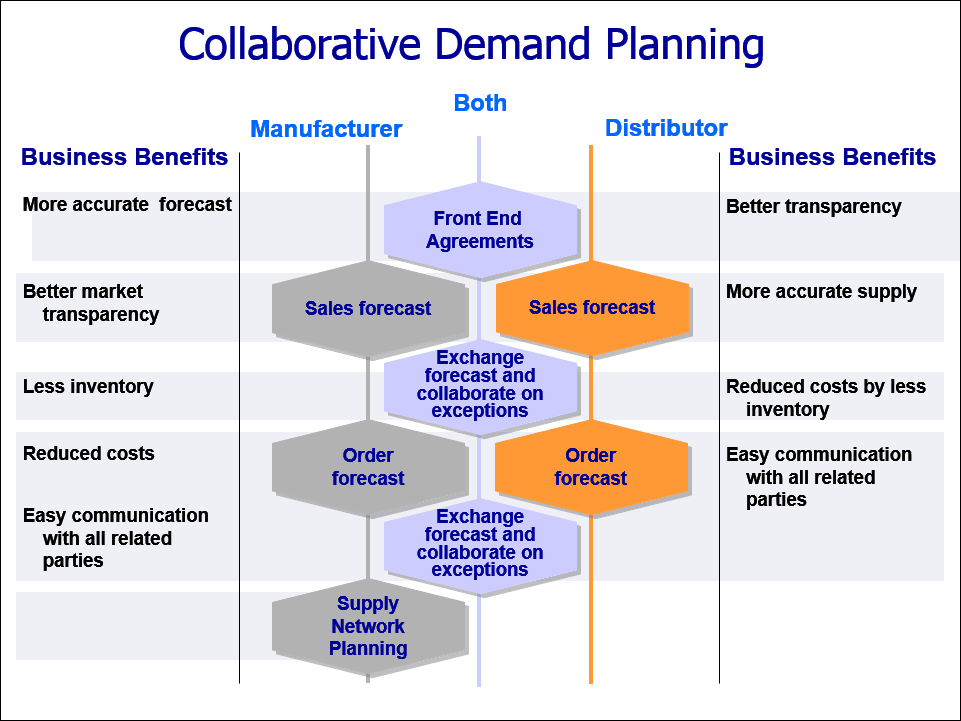Collaborative demand planning (CDP) is a collaborative approach to forecasting and planning demand, used in supply chains and product development. It helps businesses manage forecast uncertainty and optimize resources by coordinating the demands of various stakeholders. In a nutshell, collaborative demand planning helps teams stay on track with their planned demand while managing the potential for unforeseen delays or changes. To learn more about how collaborative demand planning can benefit your business, read on!
What is collaborative demand planning?

It is a process that helps companies forecast and manage demand for their products or services. By gathering input from all members of the company – customers, distributors, producers, manufacturers… even suppliers – collaborative demand planning can help reduce the number of customer service calls, improve product availability, and save on inventory costs. The key to success with collaborative demand planning is input from all members of the company. By working together as a team, everyone can optimize their operations and achieve better results overall.
Demand Planning Process
A demand planning process is a process of planning the demand using hi demand planningstorical sales data, general business information, and other types of data. The process involves forecasting demand to better plan supply logistics. The main goal behind demand planning is increasing the efficiency in order to meet customer needs within predefined time frame at minimal cost and with minimum effort.
How can collaborative demand planning be used in your business?
Collaborative demand planning is a collaborative process that is used to forecast future sales and manage unpredictable customer demand. It helps businesses to understand their customers’ needs and preferences, and to plan for potential shortages or surpluses in products. The system can also be used to forecast future sales trends. By using this system, businesses can ensure that they are able to meet customer demands accurately and on time.
What is collaborative demand planning example?
Collaborative demand planning is one of the most important tools that an organization can have in order to manage their resources more efficiently and meet customer demands in an efficient manner. By working together as a team, stakeholders can come to an agreement on what needs to be produced and in what quantities, and how best to meet those needs. This process can help to bridge organizational divides and increase efficiency overall. The ultimate goal of collaborative demand planning is to save time, money, and resources while meeting customer demands in an efficient manner. So, what are you waiting for? Get started!
What are the benefits of using collaborative demand planning?
When it comes to planning resources, businesses can often become trapped in a cycle of forecasting and planning. Collaborative demand planning can help break this cycle and optimize resources for the best results. Here are 10 different uses for collaborative demand planning that can help your business grow and thrive:
CDP is a great way to manage and forecast customer demand and meet it head-on. By working collaboratively with customers, businesses can create a more positive relationship with them – ensuring repeat business is the norm! The benefits of using collaborative demand planning include improved customer retention, higher sales, and an overall reduction in stress levels for employees. In addition, collaborative demand planning helps businesses identify potential issues and resolves them before they become major problems. So, what are you waiting for? Start using collaborative demand planning today and see the great benefits for yourself!
Frequently Asked Questions
How can CDP help me manage supplier contracts more efficiently?
Is it necessary to use a software solution when undertaking tasks such as demand planning?
Can CDP help me avoid potential supply chain disruptions?
What is collaborative demand planning (CDP)?
How can CDP help me plan for fluctuations in my production schedule?
Who uses collaborative demand planning and why do they use it?
What are some common pitfalls when using collaborative demand planning in your company?
As a result, the process may lack focus and be ineffective. – Ineffective risk management mechanisms: Without proper safeguards in place, collaborative demand planning can lead to costly mistakes or unforeseen delays. This can be problematic as it increases the risk of customer dissatisfaction and churn. – Lack of transparency in the process: If decisions are being made behind closed doors, it is difficult for team members to understand what is happening and why.
This can lead to frustration and disillusionment on the part of employees. – Too much focus on meeting deadlines rather than quality: If demand planning is conducted exclusively for the purpose of meeting deadlines, it may sacrifice the quality of the resulting plans. This can impact customer satisfaction and lead to reduced profitability.
Conclusion
In today’s competitive business landscape, it’s essential to come up with innovative and efficient ways of meeting customer demand. Collaborative demand planning is a powerful tool that can help you achieve this goal. By working together with your team, you can develop and execute a demand plan that meets the needs of your customers while minimizing supply chain disruptions. Don’t wait any longer – check out our website for more helpful information on collaborative demand planning!
Pingback: Building Efficiency: The Benefits of Using a Wooden Gantry Crane
Pingback: Efficient Lifting with an Adjustable Gantry Crane: A Complete Guide